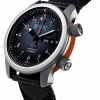Kundo Clock Suspension Unit
-
Recently Browsing
- No registered users viewing this page.
-
Topics
-
Posts
-
in other words you would like the watch to run before doing anything. Yes a full plate watch that's either not running or not running right is not really a fun watch to work with. just a reminder for the future it seems like everyone wants to play with the banking pins and there only for horn clearance. Then once you verified there were there supposed to be then you then you can check the guard pin. then once those things are verified and where there supposed to be then you can play with your pallet stones.
-
If I remember when I go to work I will ask about the break ability of sapphire. But I was under the impression or my memory says that it's a selling point and I believe at least one of the people says that basically is indestructible. It's also why a lot of times though do upgrade standard glasses this sapphire is this much more.
-
By Neverenoughwatches · Posted
Ah ok thanks, that maybe answers that one then, Cheers fellas 👍 -
From what I've read it is more prone to shatter and exposed edges can chip. But my Breitling has received some hard hits to the sapphire - e.g. when I've accidentally hit it against the corner of a desk, and no visible damage done.
-
Hello and welcome to the WRT forum.
-







Recommended Posts
Join the conversation
You can post now and register later. If you have an account, sign in now to post with your account.
Note: Your post will require moderator approval before it will be visible.